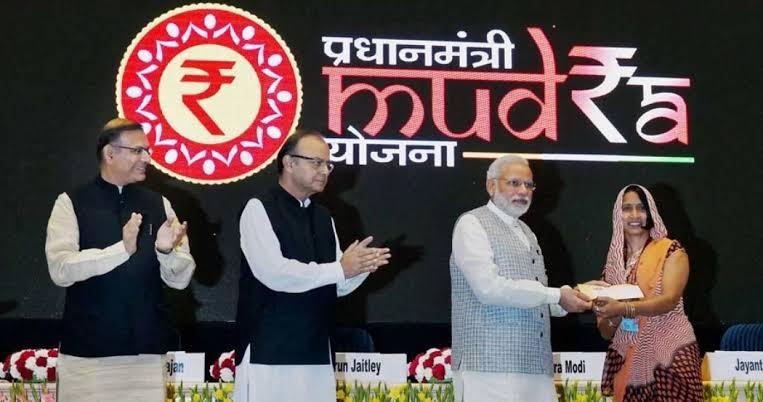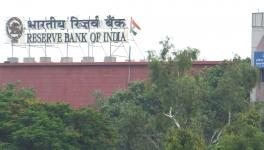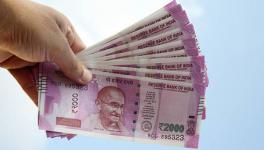MUDRA Loans: Forget Boosting Self-Employment, It’s Fostering NPAs Instead

New Delhi: Apparently meant to help address the unemployment crisis, the MUDRA loans have not only contributed remarkably little to generation of self-employment as ‘decent’ self-employment (as opposed to the selling of pakoras)—but is now threatening the financial sector with Non-Performing Assets (NPAs) or bad loans.
On November 26, Reserve Bank of India (RBI) deputy governor MK Jain, speaking at a SIDBI event, cautioned banks against the growing stress in MUDRA loans that have reportedly crossed Rs 3.21 lakh crore.
Jain asked banks to closely monitor loans disbursed under the Micro Units Development & Refinance Agency (MUDRA) category—one of Narendra Modi-led Bharatiya Janata Party regime’s pet schemes launched in April 2015 to ease credit for small and micro enterprises with loans up to Rs 10 lakh—beginning at the appraisal stage itself.
The RBI deputy governor said banks need to focus on repayment capacity and monitor closely loans through their lifecycle.
Data quoted from MUDRA’s annual report shows the NPA ratio (bad loans as a percentage of total loans) was 5.38% as on March 31, 2018.
Meanwhile, as per MSME Pulse October 2019 report, done by credit bureau CIBIL along with Small Industrial Development Bank of India (SIDBI), over the past one year, the NPA rates in Micro and SME (Small & Medium Enterprise) have remained range-bound between 8.5% (June 2018) to 8.7% (June 2019) and 10.6% (June 2018 and June 2019).
In July, the government had informed Parliament that total NPAs in the MUDRA scheme of loans worth nearly Rs 3.21 lakh increased to 2.68% in 2018-19 from 2.52% in 2017-18. However, these were still less than the 2.89% in 2016-17, the year of demonetisation, which struck a blow to MSMEs.
More than 19 crore loans had been given out under MUDRA up to June 2019 since the scheme began—of which 3.63 crore accounts were in default, as of March 2019, the government had reportedly said.
However, in response to an RTI plea, the government reportedly said that NPAs under the Pradhan Mantri Mudra Yojana had jumped by 126% in one year between 2017-18 and 2018-19. Bad loans under the scheme increased by Rs 9,204.14 crore—from Rs 7,277.31 crore in March 2018 to Rs 16,481.45 crore in March 2019.
“MUDRA is a case in point. While such a massive push would have lifted many beneficiaries out of poverty, there has been some concerns at the growing level of loan performing assets among these borrowers,” said Jain.
In July again, RBI Governor Shaktikanta Das had reportedly warned chief executives of all state-run banks, during a closed-door meeting, against piling-up of NPA accounts and asked them to be careful while giving away MUDRA loans. Earlier, former RBI governor Raghuram Rajan had also warned of asset quality troubles and bubbling up of stress in the scheme.
The MUDRA scheme is divided into three segments—called Shishu (for loans up to Rs 50,000), Kishore (for loans between Rs 50,000 to 5 lakh), and Tarun (for loans between Rs 5 lakh to Rs 10 lakh). The number of loans disbursed under the scheme has been increasing—from Rs 1,75, 312 crore in FY17 to Rs 2,46, 437 crore in FY 18 to Rs 3,11,811 crore in FY19, as per the government’s reply to a Parliament question on November 18, as shown here.
Figures taken from MUDRA’s official website show that between 2015 and March 2019, a total of 16.6 crore loans worth Rs.7.8 lakh crore were given—translating into a measly average loan per person of Rs.46,964 to start a business.
Of course, later it became apparent that these loans did not so much generate new self-employment as these only aided existing enterprises. It was reported in March that a survey by the Labour Bureau on the number of jobs created under MUDRA was shelved by the Modi government at least until the 2019 Lok Sabha elections. The Labour Bureau survey revealed, it was reported later, that only a fifth of all MUDRA beneficiaries surveyed took loans to start new enterprises—the rest took loans only to expand existing businesses.
The MUDRA scheme provides loans at low rates for people to set up small business and in order to generate jobs through self-employment. The loans are given to microfinance institutions and other non-banking financial institutions, which in turn lend to non-corporate and non-farm MSMEs, which traditionally face a hard time securing funding from banks due to lack of or poor credit rating (estimation of the creditworthiness of a borrower).
Get the latest reports & analysis with people's perspective on Protests, movements & deep analytical videos, discussions of the current affairs in your Telegram app. Subscribe to NewsClick's Telegram channel & get Real-Time updates on stories, as they get published on our website.























